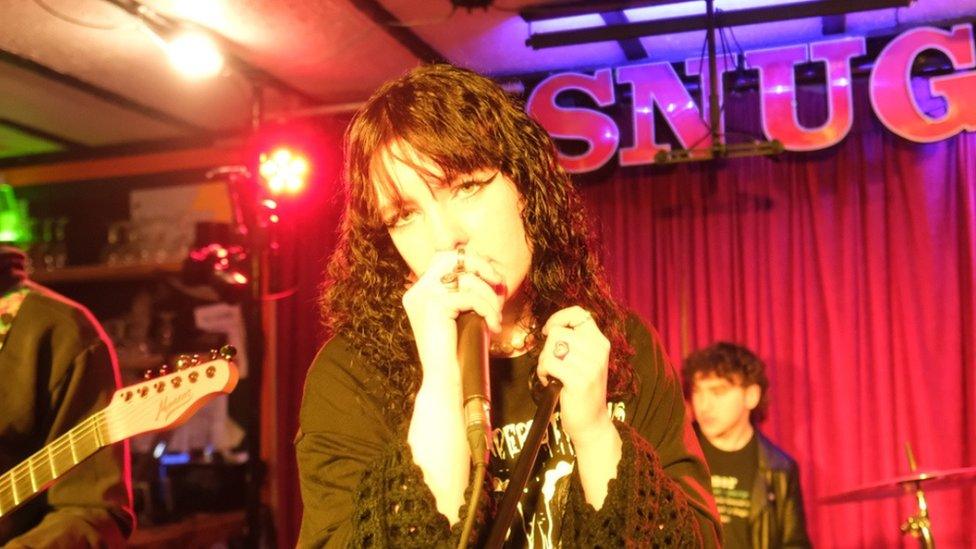Bath's Moles club is described as 'welcoming to all'
- Published
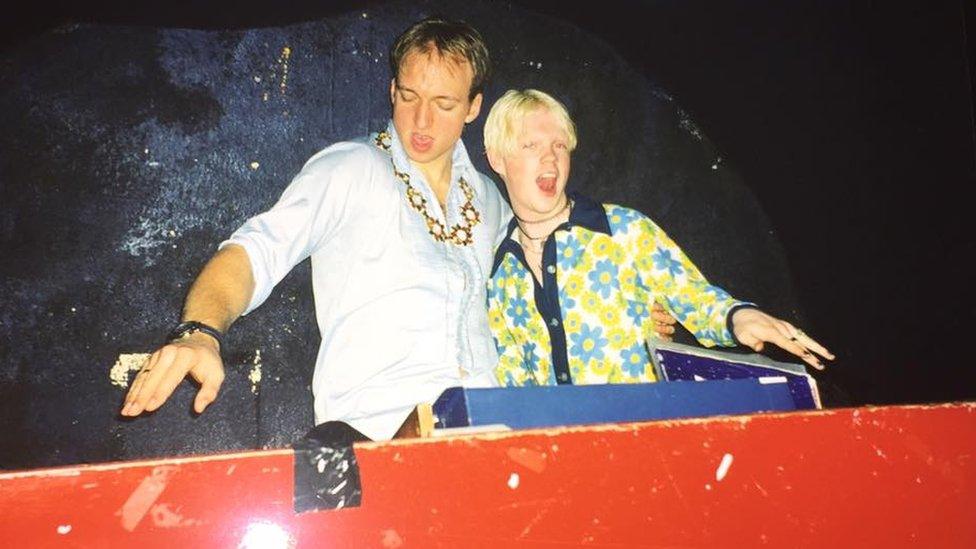
Dan Flitcroft said Moles was the place he gravitated to and found his "tribe"
Iconic, special, sweaty and "not like the rest" - those are just some of the anecdotes shared about Moles, one of the UK's best-known grassroots music venues that has closed its doors for the final time. Since opening on George Street, Bath, on New Year's Eve 1977, the likes of Ed Sheeran, Eurythmics, Blur, Oasis and George Ezra have played there on their way to stardom. It weathered many storms over the years, a devastating fire in 2014 and the pandemic in its last 10 years alone, but the cost-of-living crisis would be the final nail in its coffin.
Announcing its closure on Tuesday, Tom Maddicot, one of the venue's owners, said the rising costs of utilities and stock, high rents and the fact that due to the cost-of-living crisis people no longer have enough money to go out as often as they used to was a "perfect storm" and Moles' owners had no choice but to file for voluntary insolvency.
"It's a very sad day for live music and Bath in particular. It basically takes Bath off the touring circuit. There is nowhere else for that 200 to 300 capacity," he said.

Mark Ashton said he reviewed The Smiths at Moles when they played in 1983
"Moles was the only place that catered for that," he added.
And catered to everyone is exactly what it did, said Dan Flitcroft, who runs Stage2Studios in Bath and spent many a night DJing behind the decks at Moles in the early 2000s.
"It was very much the alternative destination. Moles catered for everyone - the hippies, the rockers, the punks. It wasn't like the other clubs."
"It was open to everyone. It was just the place I gravitated to and found my tribe," he added.
Mr Flitcroft said the venue was the "aspirational show to play" and "such a huge part" of his adolescence.
He said he remembers seeing Gabrielle play a pre-Christmas secret show and another time, bumping into Eamon Holmes.
"Moles was the place that all the TV stars went to."
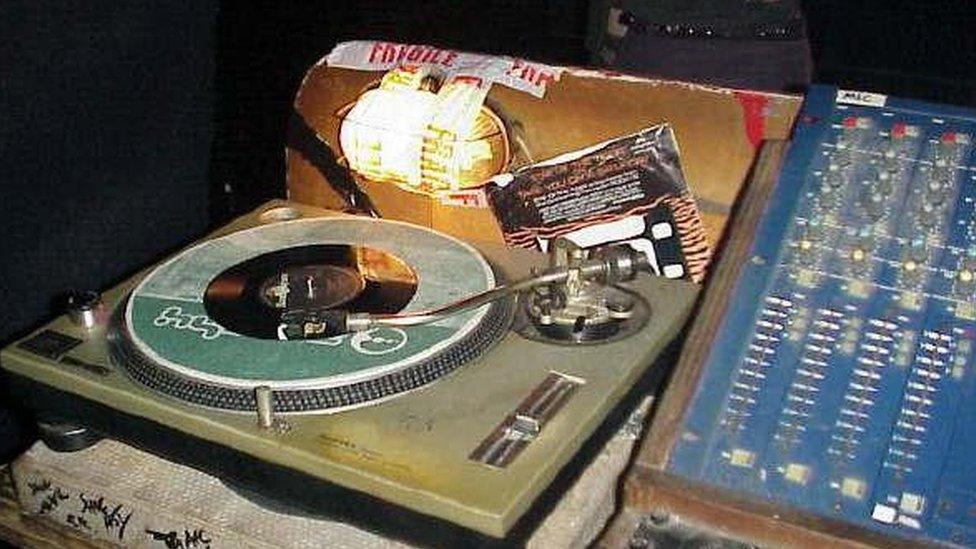
Moles opened in Bath on New Year's Eve 1977
Mr Flitcroft said he had some bizarre times in Moles, seeing Take That star Robbie Williams on a night out, and then on a separate occasion bumping into TV personality Gary Wilmot.
"He complimented me on my dancing. I was sat there and I just started talking to this guy. I was half cut. Next minute I said, hold on, 'you're Gary Wilmot' and he was like 'yeah'."
"It's the end of an era," he added.
Mark Ashton, from St Andrews, told BBC Radio Bristol he first started going to Moles as a student back in 1982, playing with his band Division of Labour and even took part in their open mic nights for free entry and a "couple of free pints of beer".
He said: "When you played there you were face-to-face with the front row.
"I got to know the doorman very well there called Bob Draper, who was a fantastic photographer and he took pictures of all of the bands."
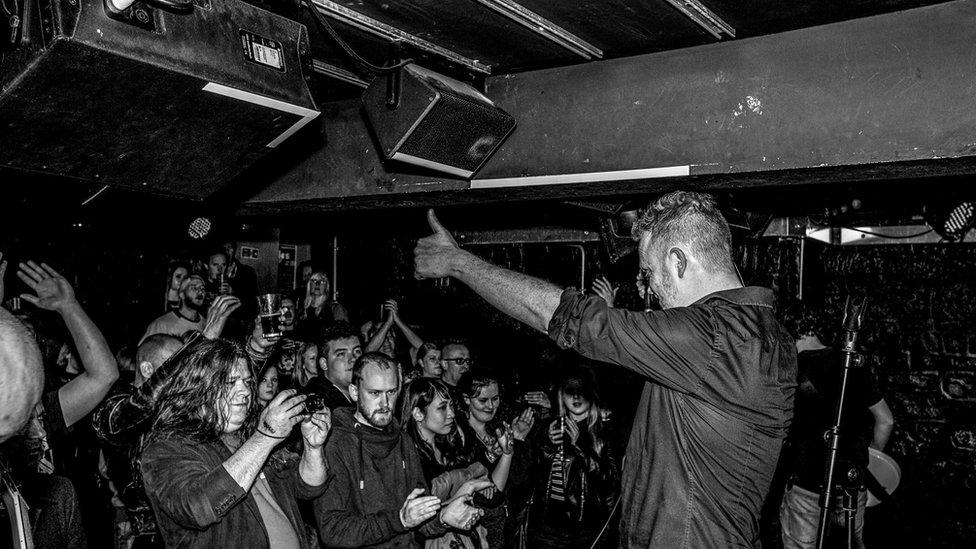
Dan Flitcroft also played Moles with his band Sargeant Thunderhoof in 2016
He said Mr Draper soon realised that Mr Ashton had an interest in music and writing and eventually helped him get his first media job on venue magazine, later moving on careers in both local radio and TV.
"It was all down to Moles and Bob Draper," he added.
Mr Ashton said as a writer for venue magazine, he ended up reviewing The Smiths at Moles in 1983, a band he was "singularly unimpressed" with.
"The place was half empty. Moles had a limit of 220 people. I think there was about 60 people in there and I just thought the Smiths were really kind of doomy and gloomy."
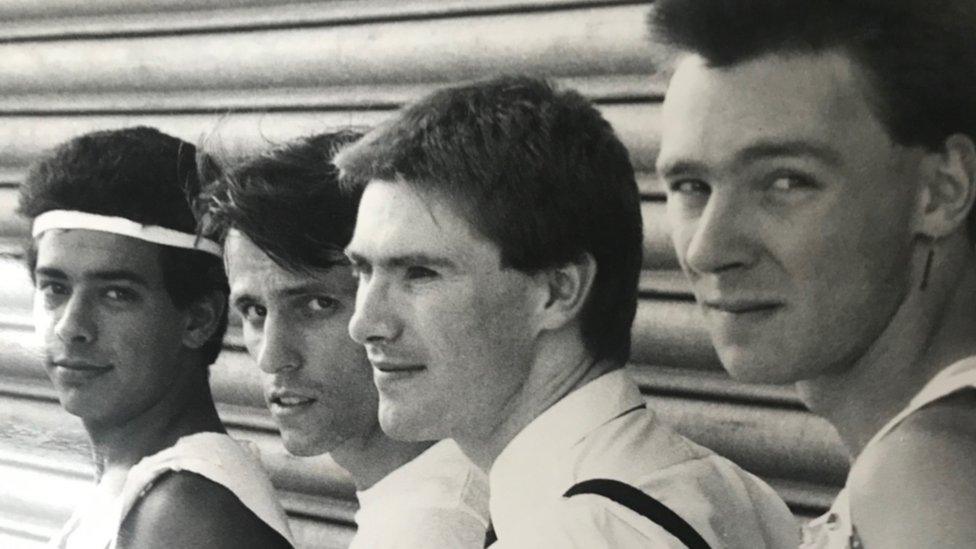
A photograph taken of Mark Ashton's band Division of Labour by Moles doorman Bob Draper
He added: "I wrote a really rather lukewarm review and then of course, two weeks later they signed for Rough Trade and the rest is history."
However, Mr Ashton said what really made Moles special was how "compact and sweaty" it was and remembers having to squeeze past the bands to get to the loo.
"The loos were behind the stage, so if you wanted to go for a wee, you had to actually squeeze yourself around the side of the band.
"You'd literally be pushing the bass player or the keyboard player out of the way."
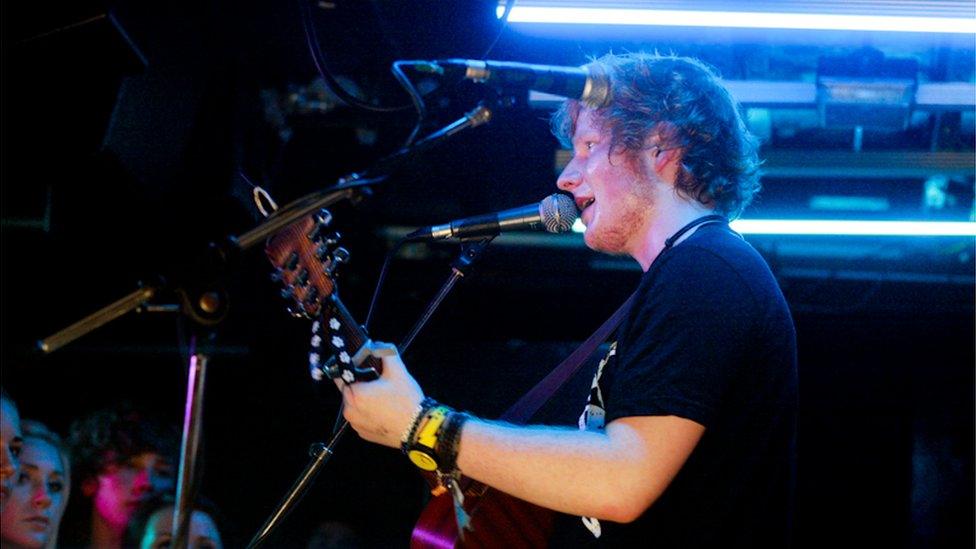
Ed Sheeran played the venue in 2011, shortly before releasing his debut album

Follow BBC West on Facebook, external, X, external and Instagram, external. Send your story ideas to: bristol@bbc.co.uk , external
Related topics
- Published24 March 2023
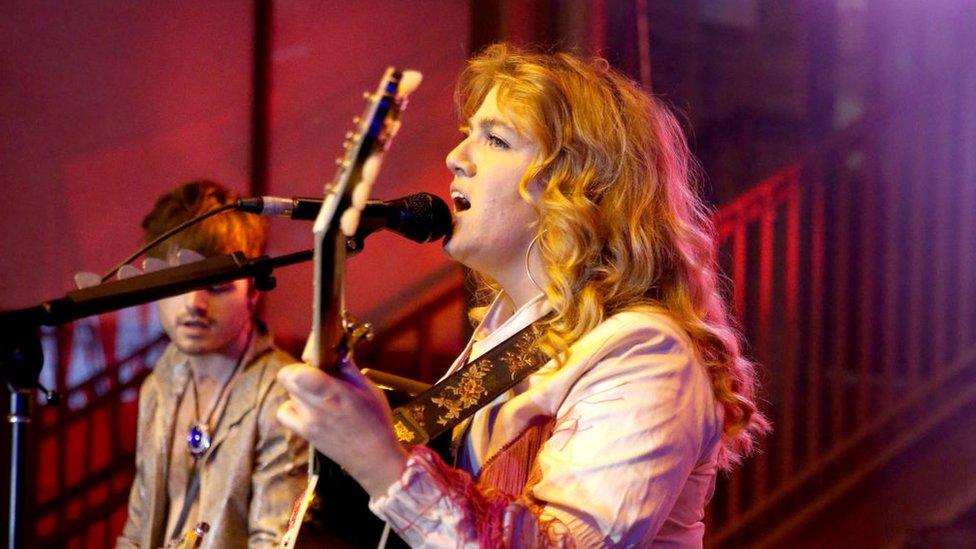
- Published5 December 2023
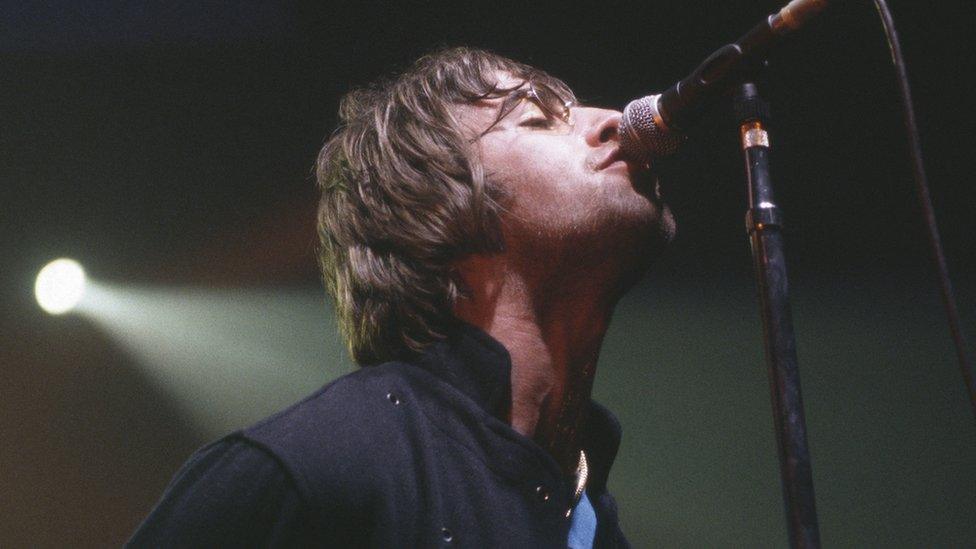
- Published4 October 2023
